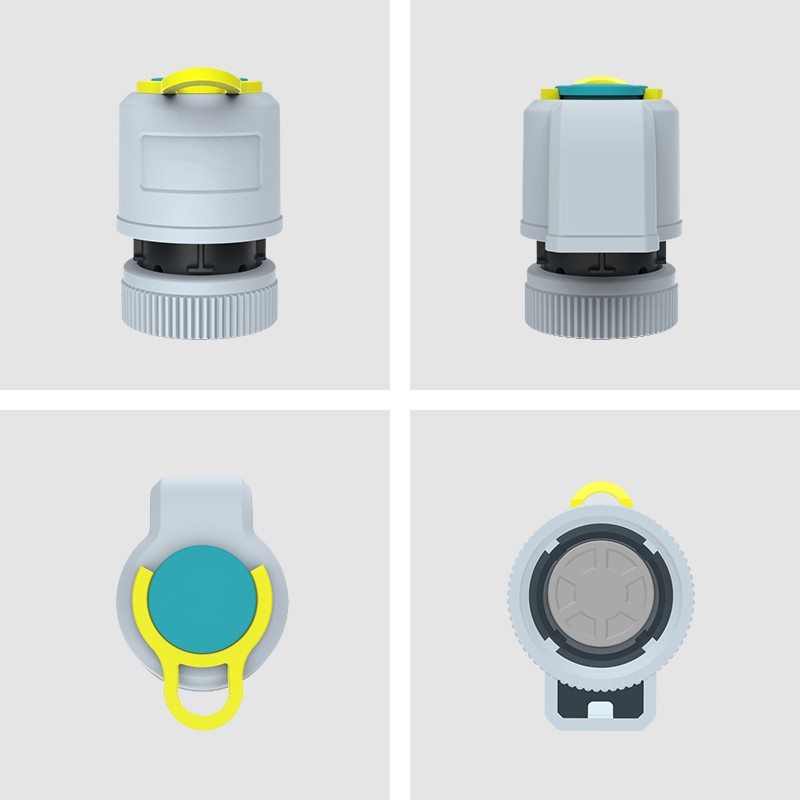Thermal Actuator Applications Around Us
2024-01-15.
Regarding thermal actuators, we have already seen their applications around us. Thermal actuators can be in heating systems, car engines, dishwashers, washing machines, and more. All devices that have valves opening and closing based on temperature settings use the principle of thermal actuators. There are some simple thermal actuators, such as those that control the flow of hot water to the radiator in a room heater using a wax-based thermal actuator.
The working principle of thermal actuators is to convert heat energy into kinetic energy. The thermal actuator uses a temperature-sensitive material sealed within a housing. Then, the diaphragm will push the plug to move the piston. The wax material is a temperature-sensitive material that does not compress easily.

Thermal Actuator Applications Based on Manufacturer’s Predictions
Thermal actuator manufacturers produce various types and sizes of electrothermal actuators, making them easy to find in numerous applications. Thermal actuators, non-electric motors with essential components such as heat-sensitive materials and pistons, have quickly attracted public attention due to their practicality and energy-saving properties.
Two main components are required to produce linear motion when temperature changes, which is why many thermal actuator applications occur in gas, vacuum, and liquid conditions. Additionally, many thermal actuators are made from sturdy materials such as stainless steel, aluminum, and brass, and the materials from which they are constructed are also durable and easy to install.
When testing the operating principles of thermal actuators, these actuators will demonstrate their resistance to shock and vibration. Therefore, this is your next suitable thermal actuator product for various applications.

Thermal Actuator Applications in Various Industries
Thermal actuator devices react very sensitively to even small temperature changes. As a result, these devices find applications across various industries, including HVAC systems, aerospace, agriculture, and automotive sectors. The simplicity of the systems, uncomplicated components, ease of integration between parts, and lightweight design are key reasons why thermal actuators are popular in many industries.
One significant difference between this actuator and other devices is its energy usage. Unlike other devices, thermal actuators can generate motion without requiring an external power source. They merely utilize the internal temperature changes to execute sure operating schedules, such as opening or closing valves or operating switches.
The presence of heat-sensitive materials is crucial to the functionality of thermal actuators, as they can respond to fluctuating temperature changes. These materials expand as the temperature rises, causing other critical components of the piston form to move until they exit the actuator. Once the temperature changes again, heat-sensitive materials like wax will contract, allowing the piston to return to its original position.

Thermal Actuator Applications for Delivery of Warm Water System
During the winter, enjoying the warm water of a shower is like a unique gift. This water heating system is usually installed in bathroom sinks to provide warm water for washing the face and eyes.
When we turn on the shower, the pressure in the diaphragm drops, opening the steam control valve. Water and steam will come out together to heat and condense the steam.
Next, the hot water will enter the thermostatic valve and proceed to the mixing valve. Here, the water and steam are combined with the cold water to create an 80°F outlet. In addition, if the water supply quits, the steam valve will remain closed.

Get to Know the Types Before Thermal Actuator Applications
It is highly desirable that you first understand the three types of thermal actuators, at least until you get into some thermal actuator applications. There are push types, push rod types, flat film types, etc. If you are in an environment with limited applications, the push-to-press option is the most appropriate of the three.
The push type and flat diaphragm are equally well suited for strokes higher than 4mm. Meanwhile, the push type is for long-term durability, such as in the aerospace industry.
Applications of thermal actuators in the aerospace industry are typically in engine lubrication systems, as part of safety shutdown processes and temperature control.
Therefore, here is a brief description of the three types of thermal actuators.

1) Press on Type
When determining the application of thermal actuators in various industries, the responsible technician carefully examines the specific requirements. Where long-term reliability, smaller design, and high travel are required, push-type thermal actuators become mainstream. It works by inserting a piston into a bag with wax surrounding it. As the wax expands, the bag squeezes and pushes the plunger into movement.
This type does not require long piston guides. We often find this version of actuator in livestock watering systems in the agricultural industry. The same goes for automatic greenhouse ventilation.

2) Pusher Type
This type has no diaphragm or bag, so the wax driver produces the highest possible striking force. There is a container containing wax and a piston inside.

3) Flat Diaphragm
Thermal actuator applications generally use this type of wax thermostatic element. This type doesn’t require long strokes and is only around 4 mm. The piston is located in the top diaphragm, making this type require a lengthier piston guide. The automotive industries use this thermal actuator for transmission cooling, oil temperature setting, and thermostat applications.





